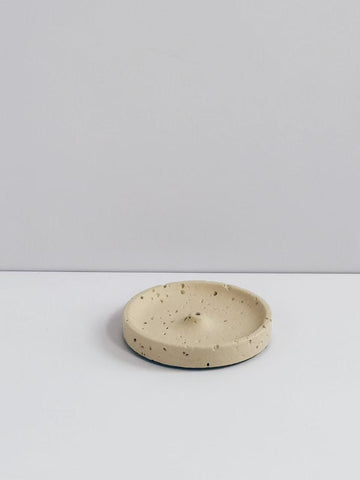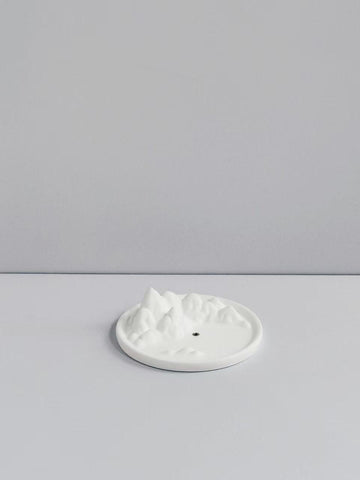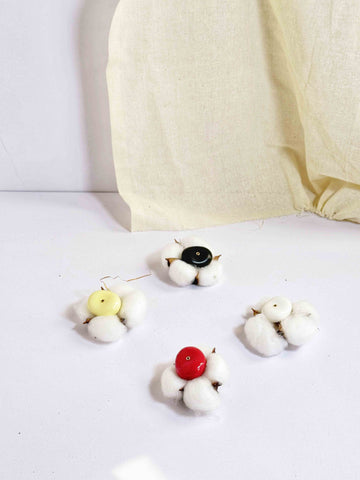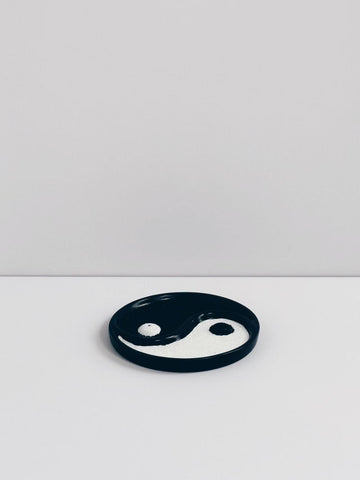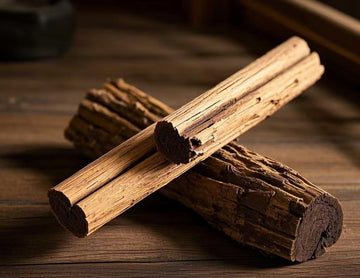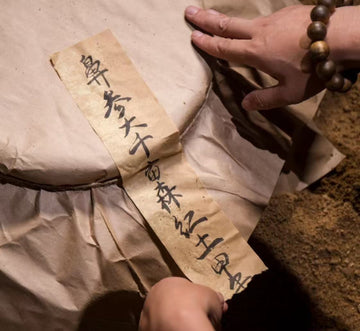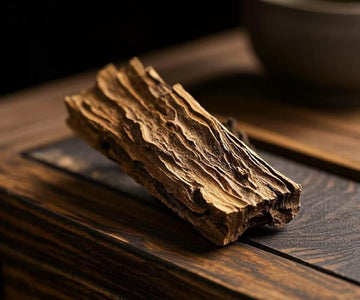Incense has played a significant role in Chinese culture for centuries, cherished for its calming effects, spiritual significance, and therapeutic properties. But what exactly is incense made of? The answer lies in its natural ingredients and meticulous craftsmanship. In this guide, we’ll explore the essential materials used in high-quality Chinese incense sticks (线香) and the time-honored techniques behind their creation.
1. The Core Ingredients of Natural Incense
Premium incense is crafted using a blend of aromatic woods, herbs, resins, and natural binding agents. These elements not only define the scent but also affect the burning experience and potential health benefits.
1.1 Aromatic Woods
-
Sandalwood (檀香): Revered for its warm, rich, and soothing aroma, sandalwood is a staple in traditional incense. Learn more about its benefits in What Is Sandalwood Incense Good For?.
-
Agarwood (沉香): Known as the "king of incense ingredients," agarwood produces a deep, resinous fragrance and is highly valued for meditation and relaxation.
-
Cedarwood (雪松木): Offers a crisp, woody aroma that promotes grounding and mental clarity.

1.2 Natural Resins
-
Frankincense (乳香): A resin with a sweet, balsamic scent that enhances relaxation and focus.
-
Myrrh (树脂): Earthy and slightly medicinal, myrrh is used for its purifying properties.
1.3 Herbs and Floral Elements
-
Lavender (薰衣草): Known for its gentle, sleep-inducing aroma that aids in relaxation.
-
Patchouli (广藿香): A deep, musky scent often associated with grounding and stress relief.
-
Rose (玫瑰花瓣): Adds a delicate floral sweetness that uplifts the senses.
1.4 Natural Binding Agents
-
Nanmu Powder (楠木粘粉): A plant-based binder that holds incense together naturally.
-
Makko Powder (抹香粉): Extracted from the tabu-no-ki tree, it helps incense burn evenly and smoothly.
2. The Traditional Art of Incense Making
The process of making high-quality handmade incense sticks (线香) is both an art and a science. Skilled incense makers follow centuries-old techniques to ensure a superior final product.
2.1 Selection and Preparation of Raw Materials
Creating premium incense begins with carefully hand-selecting raw materials. For instance, agarwood incense requires wood with a high oil content to produce a rich, long-lasting fragrance. The selected materials are finely ground using a mortar and pestle, preserving the essential oils and natural scents. After grinding, the powder is passed through a fine sieve to ensure a uniform texture before being used in incense production.
2.2 Advanced Craftsmanship: Medicinal Incense Blends
Expert incense makers (高级制香师) sometimes integrate traditional Chinese medicinal herbs into their incense recipes. These special blends are designed to support health and well-being. Ingredients such as ginseng(人参), angelica root (当归), and Chinese mugwort (艾草) are believed to provide therapeutic benefits when burned over time, helping with relaxation, energy balance, and even respiratory health.
2.3 Mixing and Forming the Incense Dough
Once the powdered ingredients are prepared, they are blended following precise formulations. Pure spring water is gradually added to form a smooth, moldable dough. If the incense is designed for specific effects—such as relaxation or spiritual focus—additional herbs like lavender or sandalwood may be included at this stage.
2.4 Shaping and Drying the Incense Sticks
The incense dough is then shaped into thin sticks or cones. Handmade incense undergoes a slow, natural drying process, allowing the ingredients to mature and blend harmoniously, resulting in a more refined and long-lasting fragrance.
For a detailed, step-by-step guide on incense-making, visit How to Make Incense Sticks.
3. Why Choose Natural Incense?
Many commercial incense brands use synthetic fragrances and chemical binders, which can release harmful substances when burned. Opting for natural handmade incense, such as those from Memoricall, ensures:
-
Pure, authentic scents with no artificial additives.
-
Potential health benefits, including stress relief, improved sleep, and better air quality.
-
A cleaner, smoother burn with minimal smoke and no harsh residues.
Concerned about the effects of incense on your health? Read our article: Is Incense Bad for You?. This guide also explains how to distinguish natural incense from chemical-based incense to ensure a safer experience.
4. FAQ: Common Questions About Incense Ingredients
Q1: What makes high-quality incense different?
High-quality incense is crafted with 100% natural ingredients, carefully sourced for their fragrance and therapeutic effects. Unlike synthetic incense, it does not contain artificial chemicals or perfumes.
Q2: How can I tell if incense is natural?
Check the ingredient list for pure plant-based components like sandalwood, agarwood, and natural resins. Avoid products labeled with vague terms like "fragrance" or "perfume," as they often indicate artificial additives. Learn how to distinguish between synthetic and natural incense. Check it out here.
Q3: What does natural incense smell like?
Natural incense offers a subtle, layered scent that evolves as it burns. Depending on the ingredients used, it can be woody, floral, herbal, or earthy. For more insights, check out What Does Incense Smell Like?.
Conclusion
Understanding what incense is made of helps you appreciate the artistry behind its production and choose the best products for your needs. Whether for meditation, relaxation, or daily rituals, opting for high-quality, natural incense enhances the experience.
For premium, handcrafted incense, explore Memoricall and discover the essence of true aromatics.

